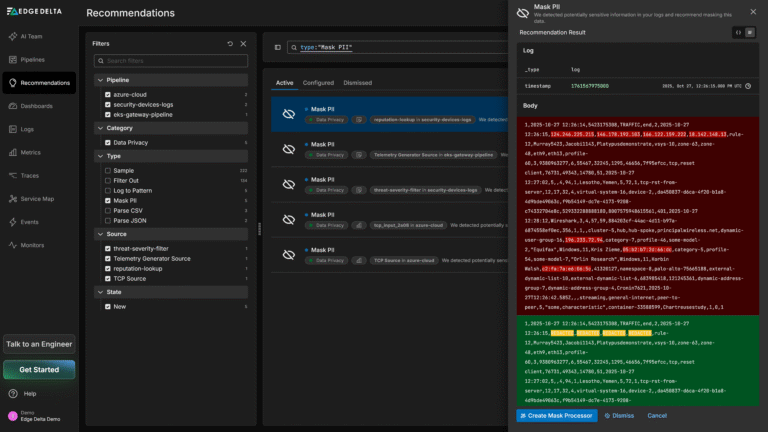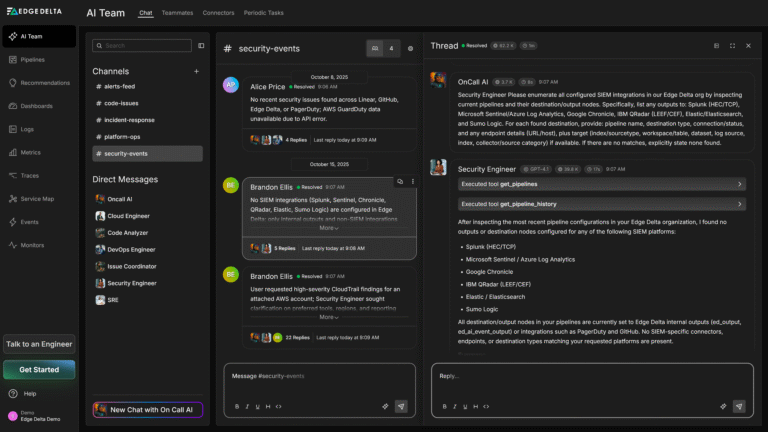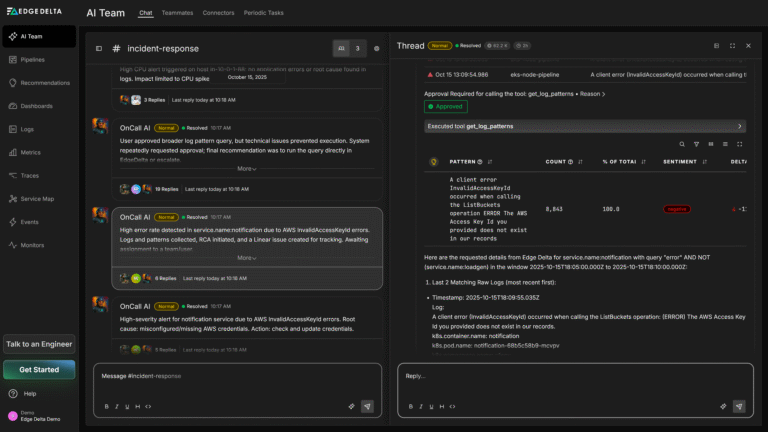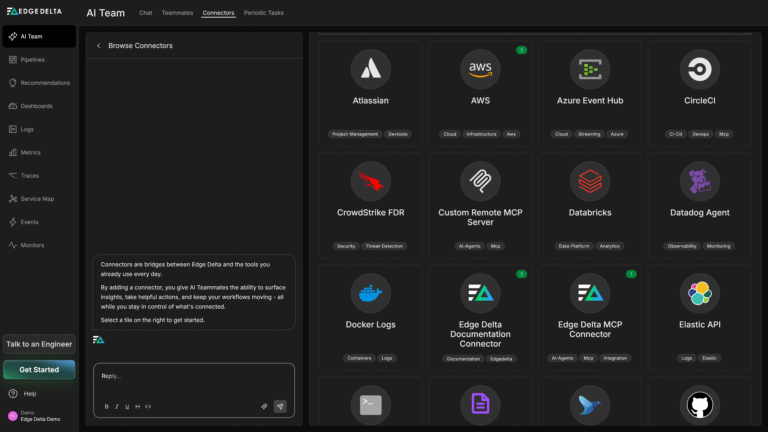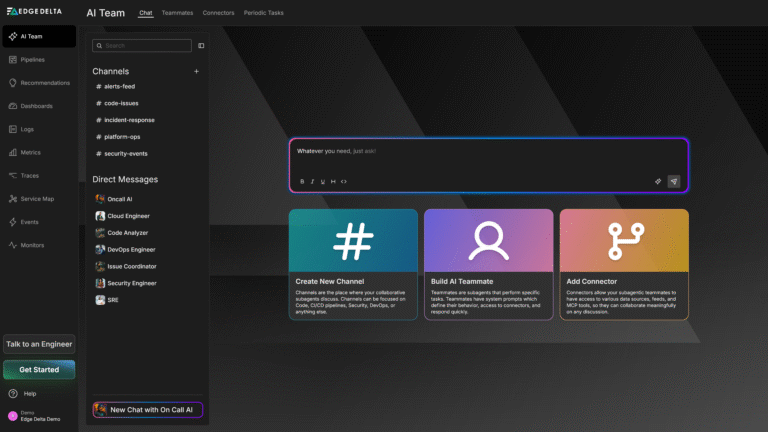Anomaly Detection
- Spot anomalies using AI/ML
- Troubleshoot faster with AI recommendations
- Automatically correlate logs to alerts
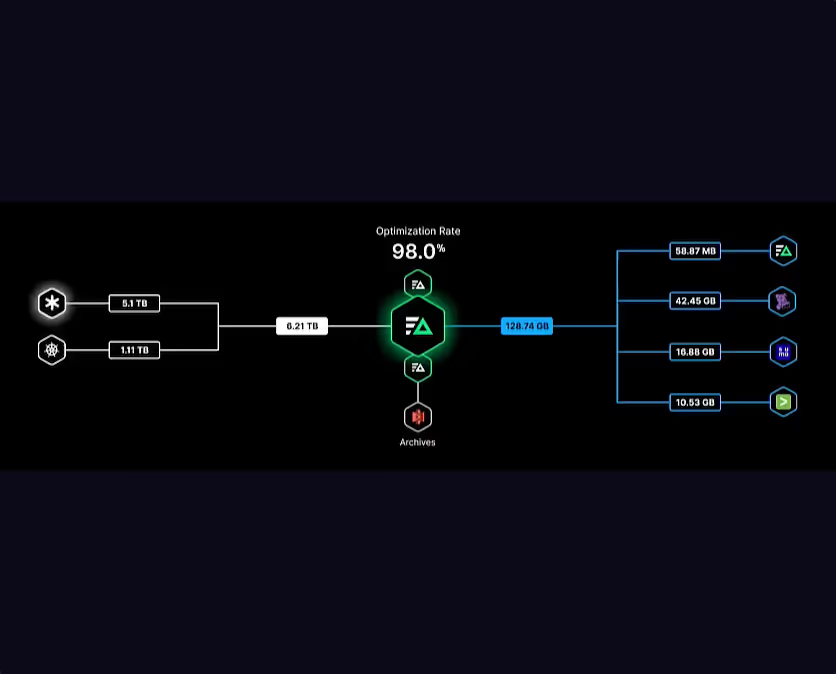










The Challenge
Traditional tools are manual and reactive
Engineering teams need to spot issues before they impact customers. However, traditional monitoring tools have several shortcomings that make this task difficult:
Manual Effort
Engineers dedicate time and effort to instrumenting code and defining alert conditions.
Inability to Detect the Unknown
When building monitors, teams must understand every behavior they'd like to alert on. As a result, they’re only catching known issues.
Alert Fatigue
Noisy alerts and false positives overwhelm teams. In the long term, this leads to missed alerts or delayed responses.
The Solution
A platform that doesn't just alert on issues – it anticipates them.
Edge Delta uses AI to monitor your services, alert you when something is wrong, and guide root-cause analysis. Now, you can see every issue and know right away how to fix it.
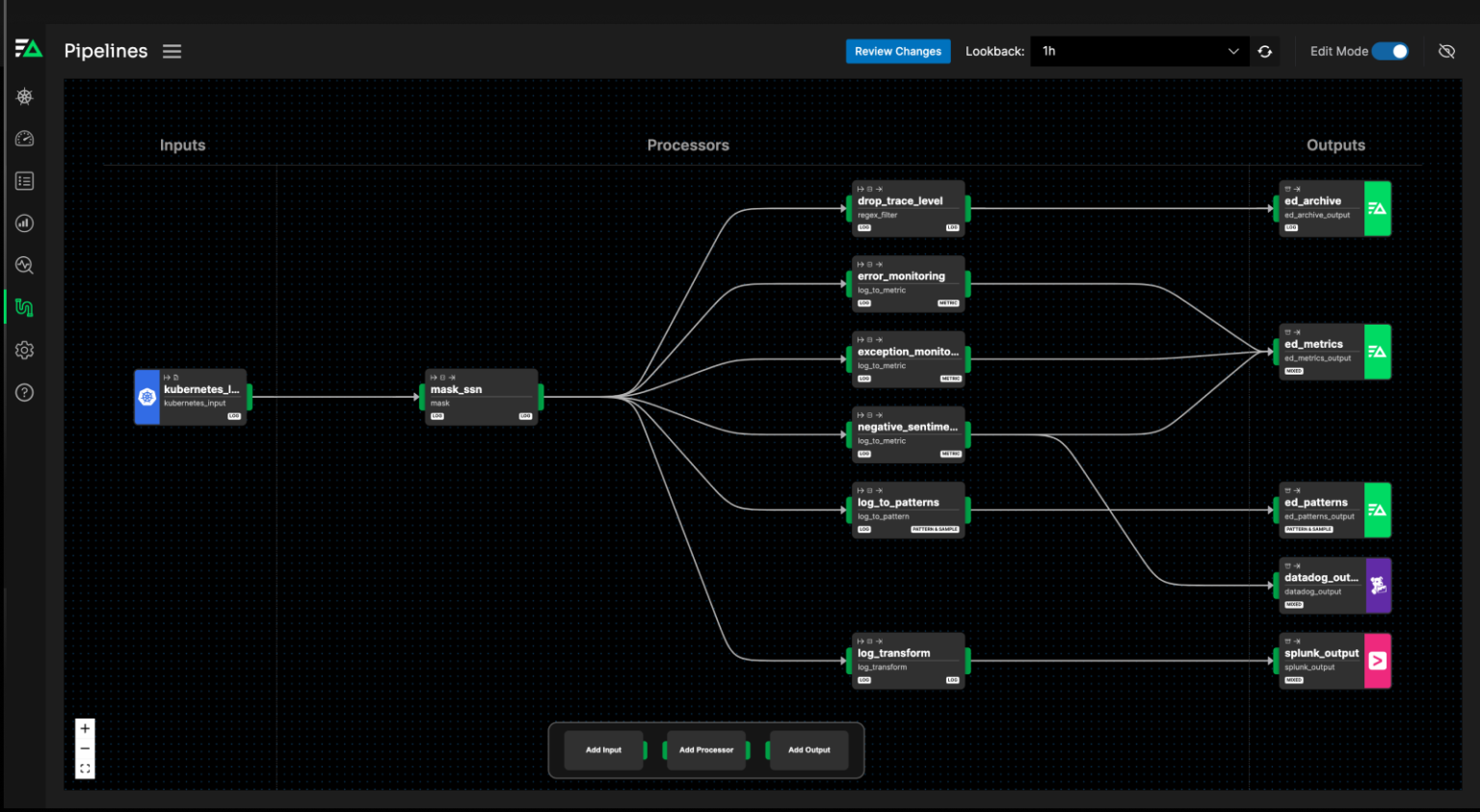
Spend zero time building alerts
Never miss a production issue
Troubleshoot with Edge Delta’s OnCall AI Copilot




Get Your AI Team Up and Running
Edge Delta's Collaborative AI Teammates come ready right out of the box. Get your connectors set up in minutes and start sharing context across your team.


How it Works
Detect known and unknown issues
Automatically detect anomalies – without defining alerts
Reduce alert fatigue using confidence scoring
View the high-level log patterns associated with the anomalous event.
Start in 30 seconds
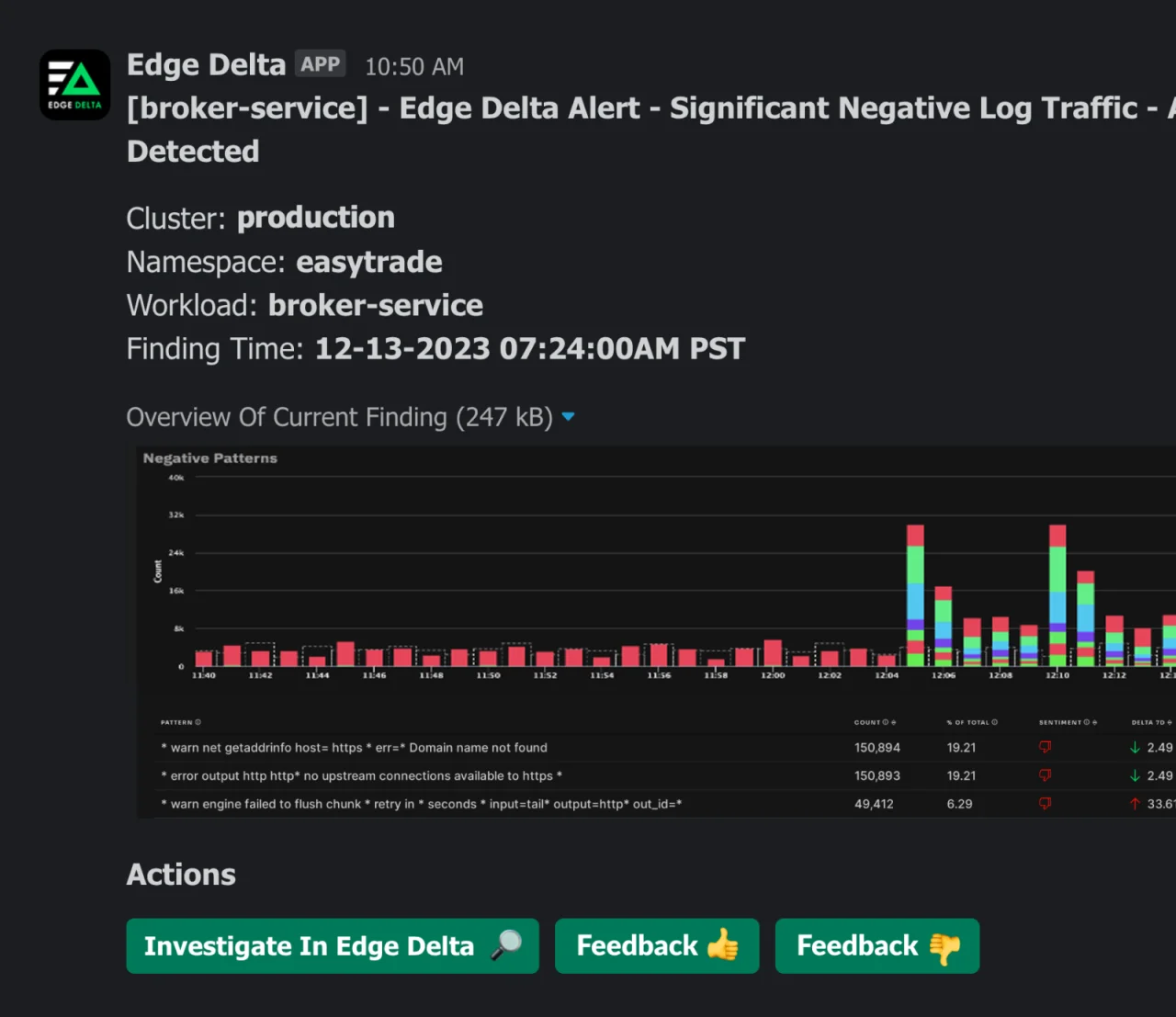

Troubleshooting Copilot
Speed up root-cause analysis
Capture all data tied to an alert – Edge Delta shows you only needles, not haystacks
Group repetitive logs into Patterns for easier investigation.
Leverage a troubleshooting assistant – Edge Delta's copilot helps you resolve issues faster.
Start Monitoring Free
Trusted By Teams That Practice Observability at Scale
“This is not just about doing what you used to do in the past, and doing it a little bit better. This is a new way to see this world of how we collect and manage our observability pipelines.”
Ben Kus, CTO, Box
Read Case Study

Join Engineering Teams That Are Embracing AI
Get started with minimal effort, simply start adding connectors and start discussing with your out-of-the-box teammates now.



